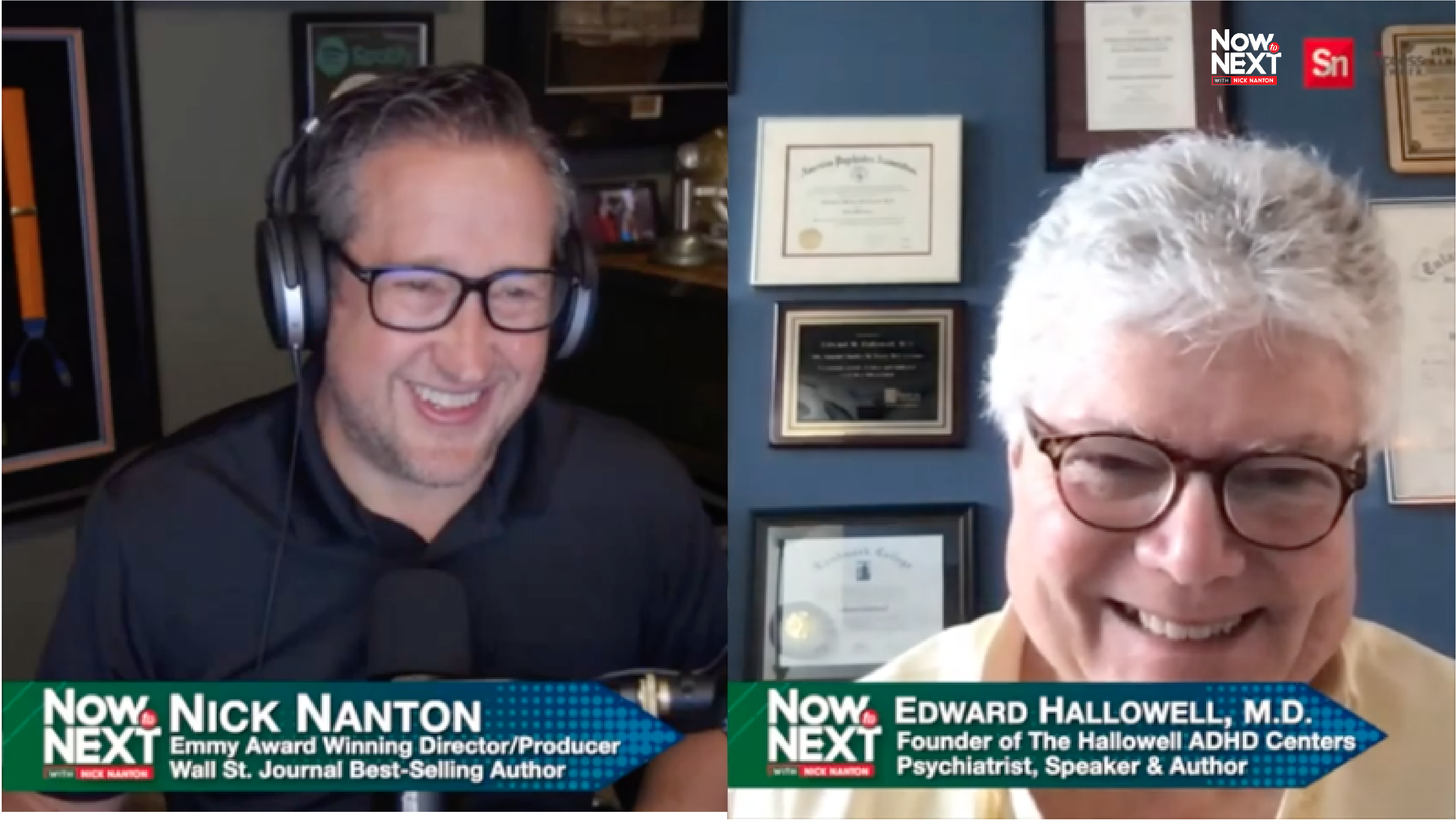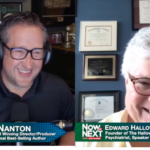If it helps you live an extraordinary life, is it a disorder? Over the past 40 years, Dr. Edward “Ned” Hallowell helped thousands of adults and children live happy and productive lives through his strength-based approach to neurodiversity. He is a board-certified child and adult psychiatrist and world authority on ADHD. A graduate of Harvard College and Tulane Medical School, Dr. Hallowell was a Harvard Medical School faculty member for 21 years. He is also the Founder of six Hallowell ADHD Centers in the USA.
Dr. Hallowell is a New York Times-bestselling author of 20 books. His groundbreaking Distraction series, which began with Driven to Distraction, co-authored with Dr. John Ratey, sparked a revolution in understanding ADHD. A regular columnist for ADDitude magazine, he hosts the weekly podcast Distraction. Dr. Hallowell has been featured on 20/20, 60 Minutes, Oprah, The Today Show, and Newsweek, USA Today, Time Magazine, and more. He has ADHD and dyslexia himself and has helped both me and my son thrive with our ADHD.
He joined me on my Now to Next podcast to share insights from his new book, ADHD 2.0.
VAST: Variable Attention Stimulus Trait
To get us started, I asked Dr. Hallowell what inspired the new book. He shared there have been quite a few updates in the field since his last book on ADHD. More than that, he wanted to challenge the idea that ADHD is an “attention deficit disorder.” In his new book, he proposes reframing the trait VAST for Variable Attention Stimulus Trait.
To say “attention deficit” is inaccurate. People with ADHD do not have a deficit of attention —that would be dementia— they have a surplus of attention, a zigzagging of attention, and need a stimulus to engage them and help them focus. VAST seems like a term that is more accurate and empowering.
At the moment, there are two versions of ADHD. One is ADHD, Primarily Inattentive, which means diagnosed individuals do not experience hyperactivity. The other version does include hyperactivity.
I asked Dr. Hallowell about the myth that ADHD is on the same spectrum as Autism. He said absolutely not. ADHD and Autism can occur together, but they are very different spectrums. The hallmark of Autism is difficulty in making reciprocal emotional contact. ADHD or VAST is entirely the opposite of that. People with ADHD seek connection intensely. They may have to learn to dial back their impulsivity, but reciprocity and connection are not their core problems.
Now or Not Now
I find learning about ADHD empowering. For my son and me, it’s unlocked ideas and brought life-changing insights about how to manage tendencies and traits.
Dr. Hallowell shared that time for people with ADHD is fundamentally different than it is for the rest of the world. We basically have two times in our sensorium: there is now and not now. So, if a teacher says the paper is due next Thursday, it’s “not now” and is gone from our mental framework. That relates to why I’m so prompt in responding to emails and messages. I know if I don’t get it done immediately, it may never happen.
The division of time into “now” and “not now” also ties into procrastination and adrenaline. ADHD medications are stimulants, and panic and adrenaline create a similar physiological response. Many people with ADHD self-medicate by leaving things until the last minute causing them to panic, that surge of adrenaline finally generates the focus to engage with the task and get it done.
Many high-stress professions attract people with ADHD. Examples include entrepreneurs, trial attorneys, surgeons, traders on the Commodities exchange, actors, journalists, and others who live in fast-paced creative fields. Boredom is our kryptonite, so we search out stimulating professions.
The Shine and the Shadow
Every trait has a good and bad, shine and shadow.
The three traits that define the condition are distractibility, impulsivity, and hyperactivity. With no awareness, management, or guidance, these traits can result in addiction, complicated relationships, crime, and other destructive patterns. However, with a little bit of insight, it turns out all three of these traits are incredibly useful and can be the basis for a productive and creative life.
On the flip side, distractibility is curiosity. One of the major driving forces in people with ADHD is curiosity. If you think about it, curiosity continually drives many of the world’s most significant discoveries.
Impulsivity is the second core trait. With no outlet, this can get people into trouble. On the flip side, impulsivity is necessary for creativity. The best part of impulsivity is being open to a new idea or trying something spontaneously. Buttoned-up people are much less creative and original, and people with ADHD are fueled by creativity.
Hyperactivity is the third core trait, but what is hyperactivity but energy? If you channel it into meaningful, creative pursuits, it can serve you well. Dr. Hallowell is 71 and is happy to have extra energy.
A Ferrari Brain With Bicycle Breaks
When he works with patients, Dr. Hallowell explains ADHD or VAST like having a Ferrari brain with bicycle breaks. He helps them devise ways of gaining control over their runaway brain.
For adults, the two best ways to do it are to find the right partner and the right job. Many people are not doing as well in life because they haven’t done both of those things. You want your partner to be your number one life mate. You want your job to be a place where you plug your brain in, and it lights up. Both of those can take some looking around before you find them.
You can see how this works in the brain of people with ADHD with functional magnetic resonance imaging, which tracks brain activity through blood flow.
Imagination is the greatest asset of people with ADHD. When we’re engaged in a creative task, four different regions in the brain light up. Together, they are called the Task Positive Network (TPN).
When you finish the creative task that engages your imagination the TPN shuts down, and what lights up is called the Default Mode Network (DMN). Ironically, the DMN uses more energy, glucose, and oxygen than the TPN. Dr. Hallowell calls it the “demon” because when people with ADHD are not actively engaged in something positive, the DMN sends out a string of negativity, self-criticism, life criticism, regret, remorse, guilt, and shame. Contentment is too bland, so if we’re not positively engaged, our brain highlights the negative.
It’s important not to feed the DMN, and instead find things to help redirect your attention. Dig a hole, have a conversation, do some exercise, blast some music, turn on the TV. We can control our attention, and for people with ADHD, we must exercise that control and refuse to “feed the demon.”
A second important rule for people with this trait is: never worry alone. When you worry alone, you feed the demon, but worrying with someone else becomes problem-solving.
Connection: The Other Vitamin C
Connection is vital for everyone, but for people with ADHD, it has even more healing power. Forming a bond with others is at least as important for our well-being as getting actual Vitamin C from fruits and vegetables.
Most people know that obesity, high blood pressure, diabetes, cigarette smoking, and not wearing your seatbelt are risk factors for early death. Social isolation is also surprisingly high on the list. Isolation makes people sick, depressed, anxious, and physically ill.
If you don’t have many people nearby or are isolated because of the pandemic, talking to people on the phone or through video chat can help. Talking and video chats are better than texting or emailing. If you live alone, dogs are also incredible connectors. You can be the grumpiest person in the world, and a dog will make you smile and love you unconditionally.
Over his decades of working with people with VAST or ADHD, Dr. Hallowell discovered that creativity and connection are the two most important factors for living a successful, happy life.
If you have a creative pursuit that is meaningful to you, whether it’s writing, gardening, designing buildings, or anything at all that is challenging and meaningful for you, it gives your brain the stimulation it needs in a productive and fulfilling way.
If you or anyone you love has ADHD, I recommend Dr. Hallowell’s book. It’s ADHD 2.0: New Science and Essential Strategies for Thriving with Distraction—from Childhood through Adulthood. He is an amazing resource, as I can personally attest. And, a fun fact for you, he was my first guest on Now to Next, and I’m delighted to have him on my podcast again. Stay tuned for an upcoming episode where he joins me to share his insights on dyslexia. And, as always, don’t hesitate to direct any questions you have to me!

